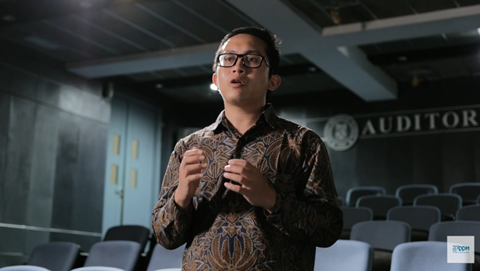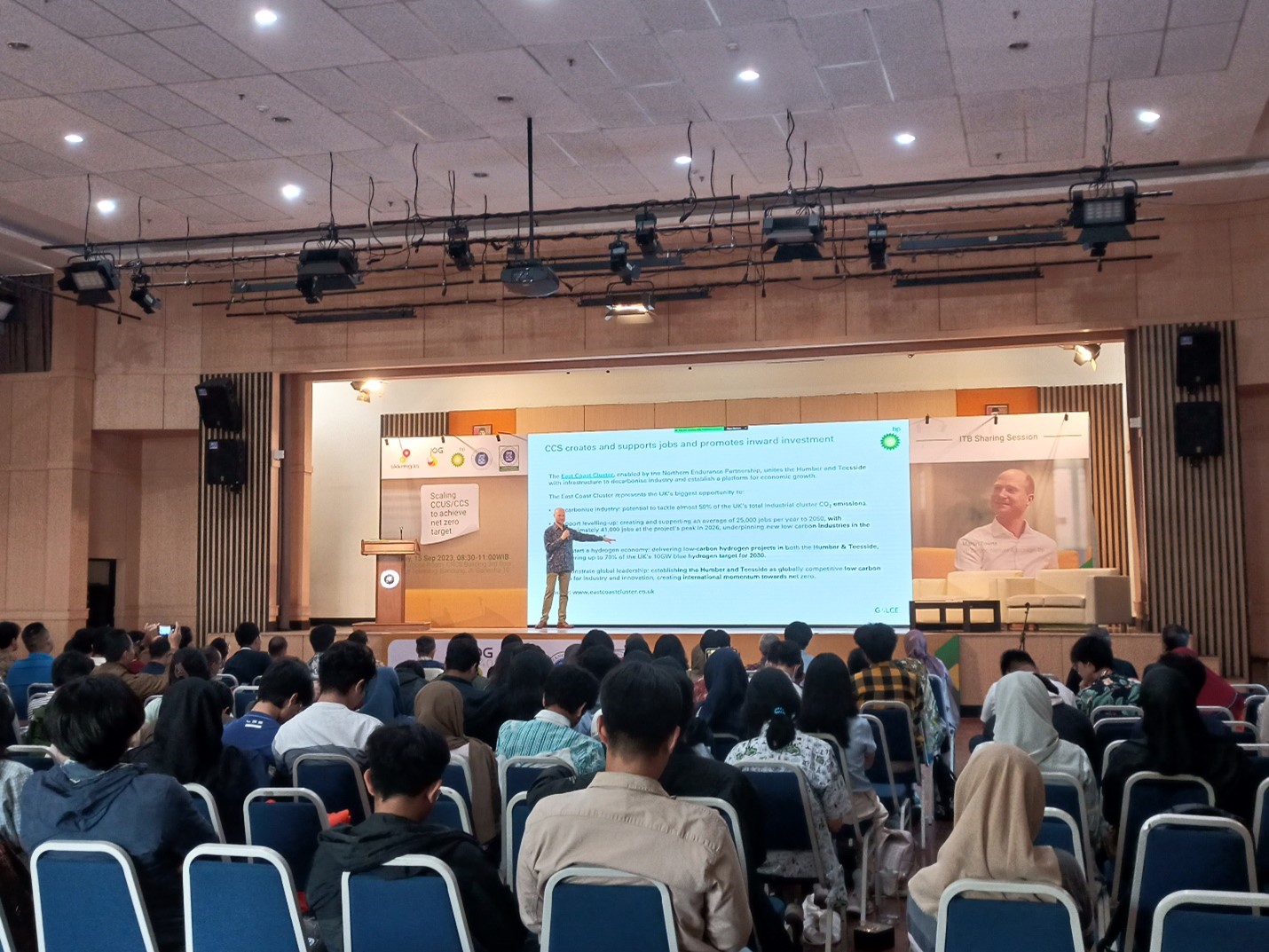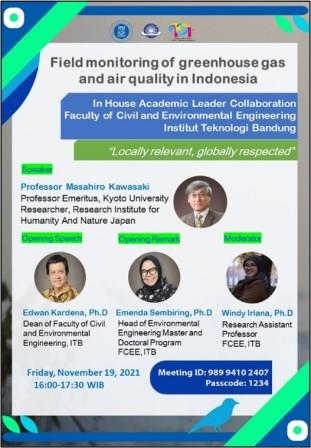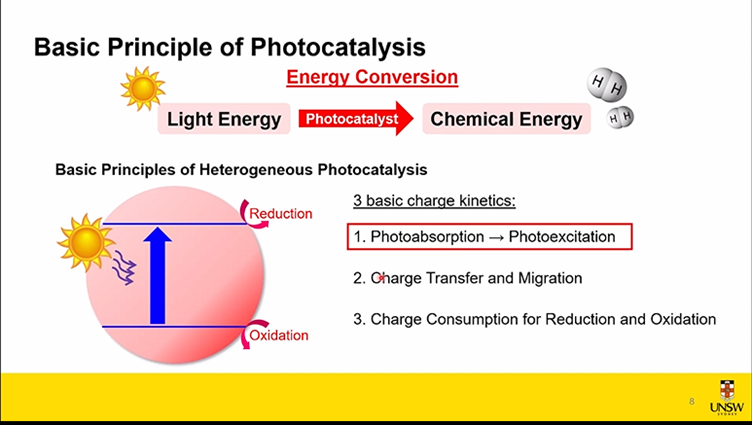Photocatalytic Technology to Reduce Greenhouse Gas Emissions

BANDUNG, itb.ac.id – "I am a native of Bandung, and in the 2000s the air was still fresh here," as Wibawa Hendra Saputera, Ph.D., began explaining his research called "Light-Driven Catalysis: Creating Fuels from Greenhouse Gas Emissions" online at ITB's LPPM (Institute for Research and Community Service) Workshop Series on Wednesday (02/15/2023). "However, Bandung's air is getting more humid. It can even be difficult for me to breathe if I walk by the roadside."
pollution in the region is caused by increases in greenhouse gas emissions in the form of carbon dioxide produced by industrial activities and motorized vehicles. The International Energy Agency reveals that carbon dioxide gas emissions in Indonesia reached 510 million tonnes per year in 2020.
If not handled immediately and seriously, the problem of air pollution will aggravate, causing health-related issues, global warming, sea level rise, drought, forest fires, ecosystem disruption, and other grievous impacts.
With the hope that the concentration of carbon dioxide could be controlled in the atmosphere, Wibawa advised reusing these emissions as valuable fuels or chemicals. The process of reusing carbon dioxide can be divided into three stages: carbon capture and storage, carbon reduction, and carbon utilization.
Numerous countries are currently developing and implementing technologies that can reuse carbon dioxide. Indonesia is no exception. In Jatibarang, Indramayu, carbon dioxide captured from power plant emissions is repurposed as an oil-propelling fluid. "The example of this application at Pertamina shows that carbon dioxide, which is originally a waste or air pollutant, can be reused to assist the oil and gas industry."
An alternative technology serving as a tool to reuse carbon dioxide is the catalytic process, which involves chemical compounds to accelerate the reaction rate in forming certain products. Under high temperature and pressure conditions, this process is more commonly known as the thermocatalytic process and has been widely implemented. However, the process is still relatively expensive and entails considerable risks to effectuate.

One of the alternatives to thermocatalytic technology is photocatalytic technology. The latter is even regarded as better and more effective than the former. Photocatalytic technology uses a light source and catalyst to boost the reaction rate. The light source can be UV, visible, or sunlight, which reduces operating costs and improves safety. In addition, these three aforementioned lights contain lower energy and can be controlled at room temperature and pressure.
"Catalysts that can be used in photocatalytic technology are semiconductor-based materials," Wibawa added. Common examples of such materials are titanium dioxide and zinc oxide. "From a molecular standpoint, semiconductor materials have a band gap of 2 to 4 electron-volts, making it effective in separating the negative and positive charges." This separation process prompts simultaneous reduction and oxidation reactions to occur.
Photocatalytic technology can produce reusable, economically valuable, and environmentally safe chemicals. Therefore, by utilizing this technology, industrial waste treatment can be performed more effectively so that the produced waste can adhere to the set standards. Another example of photocatalytic implementation is water decomposition, where water is "transformed" into hydrogen and oxygen. The resulting hydrogen is then reused as fuel cells.
According to Wibawa, Indonesia can utilize photocatalytic technology to process carbon dioxide into more valuable chemicals like methanol. Methanol itself can be reprocessed into raw material for biodiesel and dimethyl ether, both of which are everyday energy sources. Methanol can also be used directly in the industry, such as in the polymer and resin industry.

Photocatalytic technology is sustainable and supportive of the circular economy as it focuses on the reduction, reuse, and recycling of waste. The technology can be arguably thought of as utilizing renewable energy sources in the long term. Moreover, it aligns with multiple SDG (Sustainable Development Goals) objectives, namely number 7 on clean and affordable energy, number 13 on climate action, and number 3 on good health and well-being.
"The photocatalytic technology is an environmentally friendly technology that can help realize the government's target of net zero emission by 2060," Wibawa concluded.
Reporter: Ruth Nathania (Civil Engineering, 2019)
Translator: Ariq Ramadhan Teruna (Chemical Engineering, 2021)

scan for download






